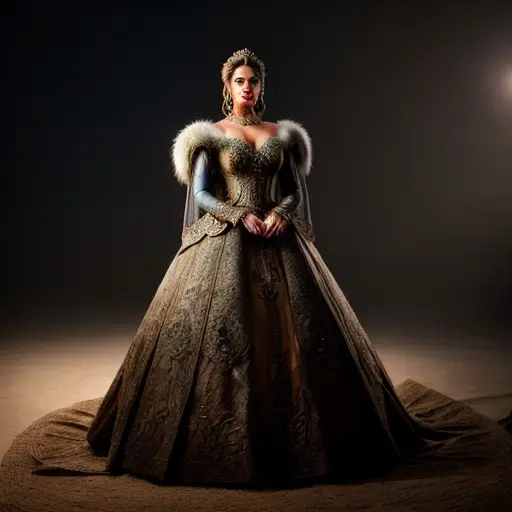Unveiling the Past: Exploring the Motivations Behind Artists' Depiction of Historical Events
Artists often choose to depict historical events in their work for a variety of reasons. By exploring the motivations behind these artistic representations, we can gain a deeper understanding of the significance of the past in shaping our present and future. Through their creative interpretations, artists can bring to life the emotions, struggles, and triumphs of individuals and societies from different time periods, allowing viewers to connect with history on a more personal and visceral level. Additionally, artists may use historical events as a means of reflecting on contemporary issues, sparking conversations and encouraging critical thinking about the world we live in today. Ultimately, the decision to create art based on historical events is a powerful way for artists to engage with the past, provoke thought, and inspire change in the present.
Art as a Time Machine: Understanding the Significance of Historical Context in Artistic Creation
An interesting fact about why an artist would create a work based on historical events is that it allows them to bridge the gap between the past and the present, providing a unique perspective on history. By visually interpreting historical events, artists can evoke emotions, challenge existing narratives, and encourage viewers to reflect on the impact of the past on our present lives. Through their creative expression, artists can breathe new life into historical events, making them more relatable and accessible to contemporary audiences.
Artists often choose to create works based on historical events as a way to transport viewers back in time and immerse them in the cultural, social, and political contexts of the past. By incorporating historical elements into their art, artists can provide a window into different eras, shedding light on the complexities and nuances of history. Through their creative interpretations, artists can challenge viewers to consider how the past continues to influence the present and shape our collective identity. By understanding the significance of historical context in artistic creation, we can appreciate the power of art as a time machine that bridges the gap between past and present, offering insights and perspectives that resonate with audiences today.
From Canvas to Chronicle: Unraveling the Intricate Relationship Between Artists and Historical Narratives

Artists often feel compelled to create works based on historical events due to the intricate relationship between art and storytelling. Through their art, artists have the unique ability to capture the essence of historical narratives, bringing them to life in a visually compelling and emotionally resonant way. By delving into the past, artists can unearth untold stories, amplify marginalized voices, and challenge dominant historical narratives. Through their creative interpretations, artists can offer alternative perspectives on well-known events, prompting viewers to reconsider their understanding of history and the individuals who shaped it.
Furthermore, artists may choose to depict historical events as a means of grappling with the complexities of memory, trauma, and collective identity. By revisiting the past through art, artists can confront unresolved historical wounds, confront difficult truths, and honor the resilience of those who have endured hardship. Through their creative process, artists can navigate the blurred boundaries between fact and fiction, inviting viewers to engage critically with the narratives that shape our understanding of the past. In doing so, artists can spark conversations about the ways in which history is constructed, remembered, and interpreted, highlighting the enduring relevance of historical events in our contemporary world.
Moreover, artists may be drawn to historical events as a source of inspiration and reflection on the human experience. By exploring the triumphs, tragedies, and moments of transformation that have defined different time periods, artists can tap into the universal themes that connect us across generations. Through their art, artists can capture the emotional depth and complexity of historical events, inviting viewers to empathize with the struggles and triumphs of individuals who lived in the past. In this way, artists can bridge the gap between past and present, fostering a deeper appreciation for the enduring power of art to illuminate the human condition and transcend the boundaries of time and space.
Ultimately, the decision to create art based on historical events is a testament to the enduring impact of the past on the present. By unraveling the intricate relationship between artists and historical narratives, we can gain a deeper appreciation for the ways in which art serves as a powerful tool for understanding, interpreting, and reimagining history. Through their creative endeavors, artists can challenge us to confront uncomfortable truths, celebrate forgotten heroes, and envision a more inclusive and just future. In this way, art becomes a vital conduit for exploring the complexities of the past and shaping a more nuanced and empathetic understanding of the world we inhabit.
Beyond the Brushstrokes: Delving into the Reasons Artists Choose to Reimagine Historical Events in their Works
Fun fact: One reason why an artist might create a work based on historical events is to challenge the notion that history is a static and unchanging narrative. By reimagining and interpreting historical events through their artistic lens, artists can encourage viewers to question established narratives, explore alternative perspectives, and engage in critical thinking about the past.
Artists choose to reimagine historical events in their works as a way to breathe new life into familiar narratives and challenge conventional interpretations of the past. By infusing historical events with their unique artistic vision, artists can offer fresh perspectives, provoke thought, and inspire dialogue about the enduring relevance of history in our contemporary world. Through their creative endeavors, artists can transcend the constraints of time and space, inviting viewers to engage with the past in a dynamic and immersive way that sparks curiosity, empathy, and critical reflection. In reimagining historical events, artists not only pay homage to the stories of the past but also invite us to consider how these narratives continue to shape our present and future.

